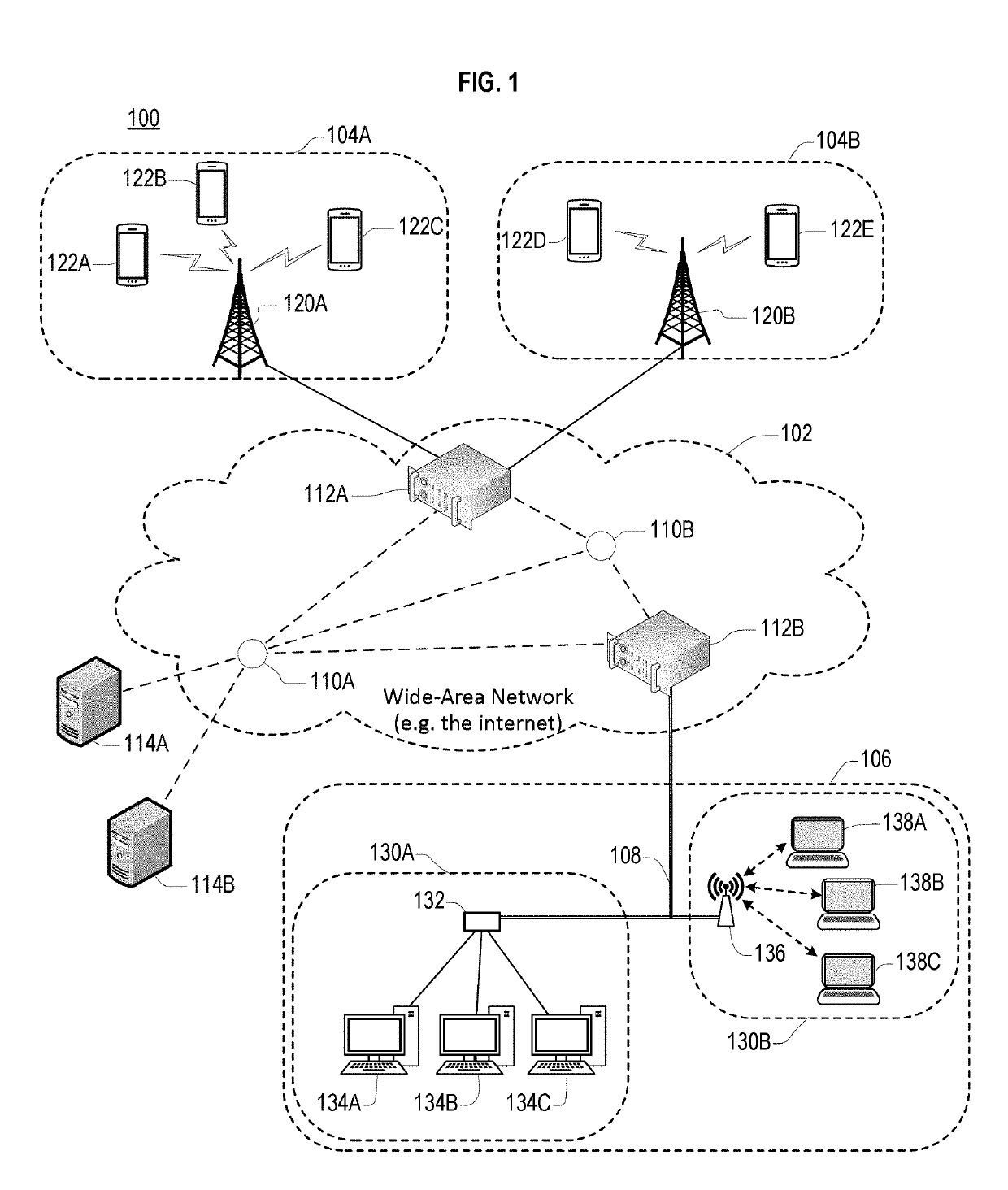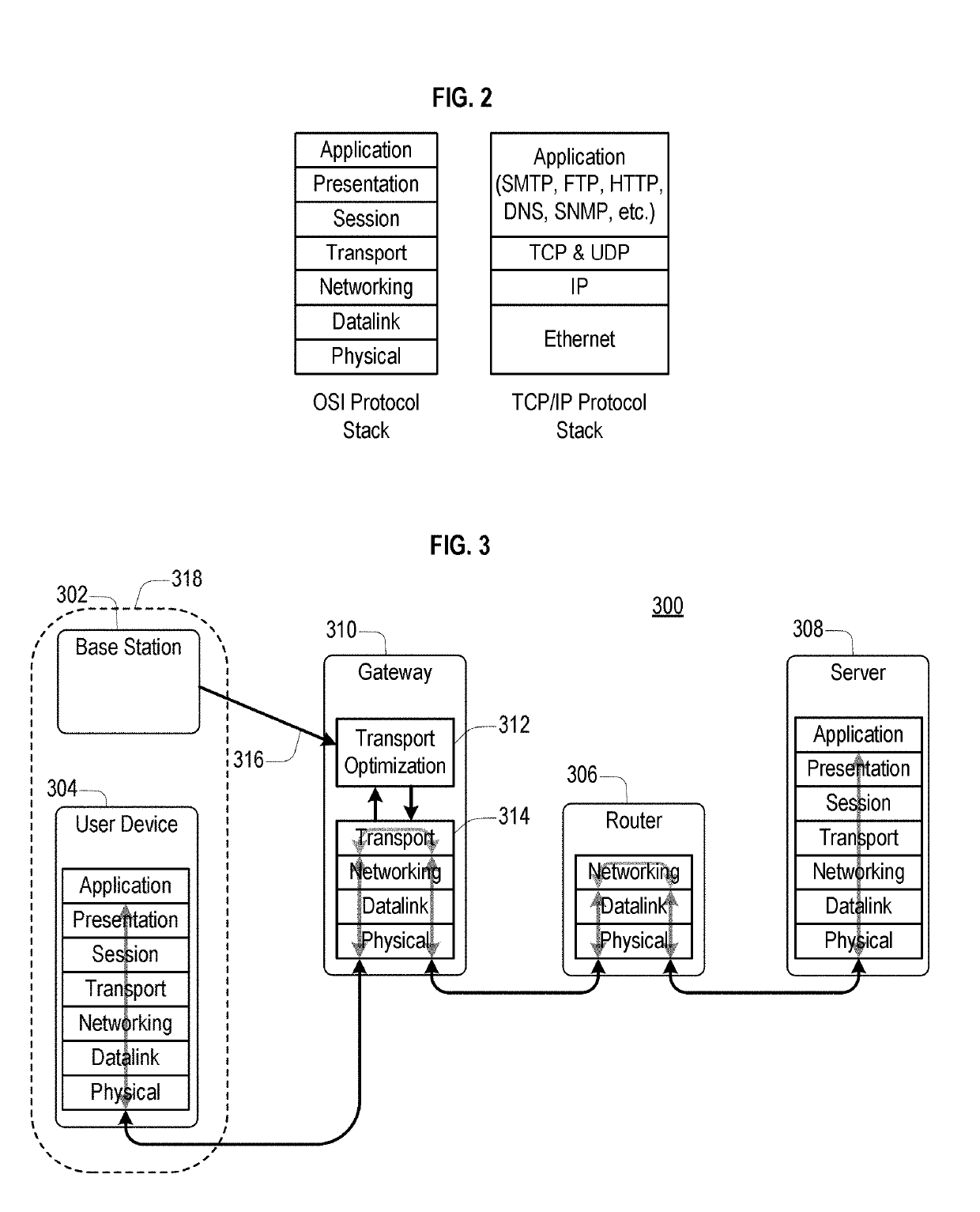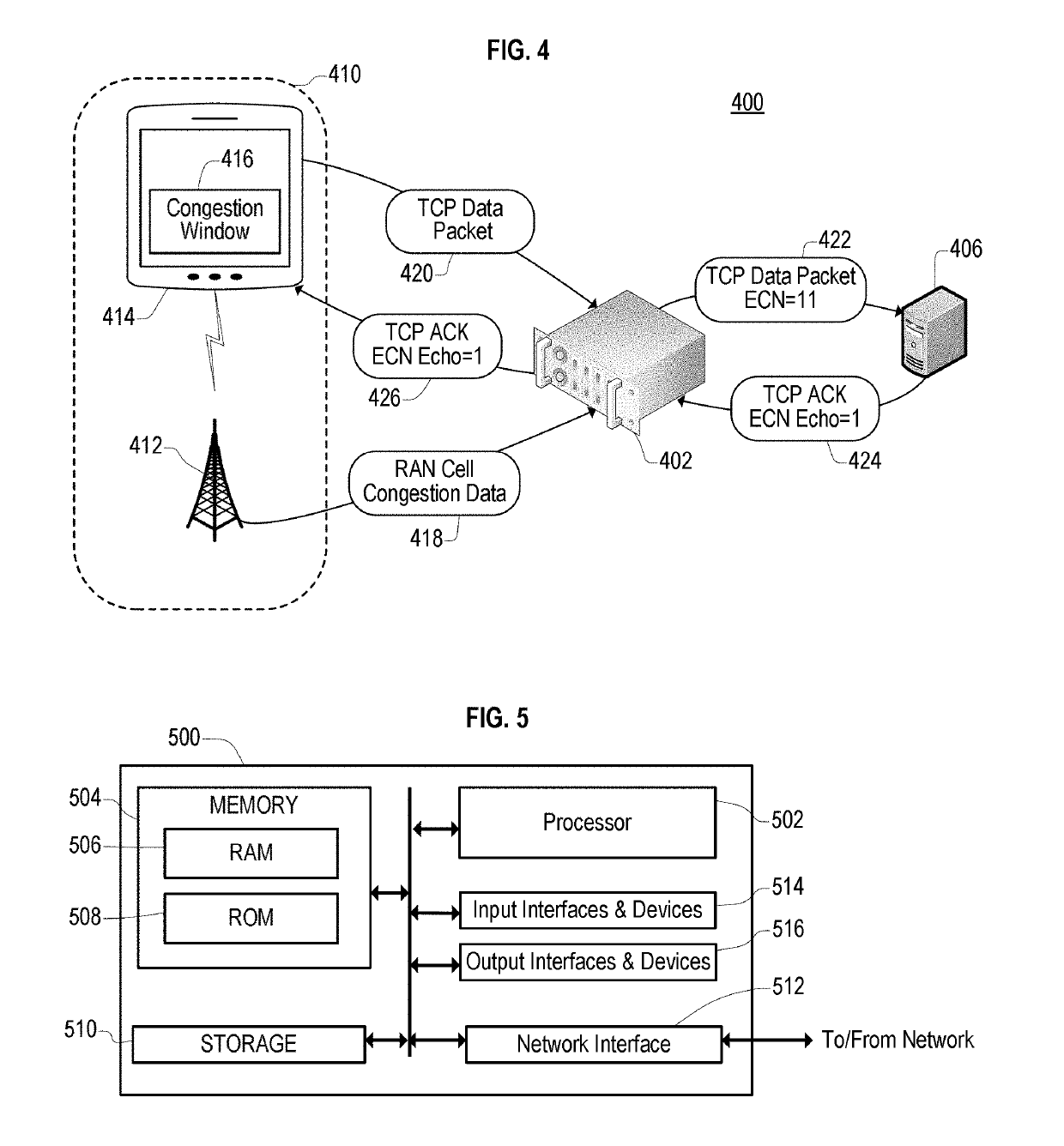System and method for accelerating or decelerating a data transport network protocol based on real time transport network congestion conditions
a data transport network and real-time congestion technology, applied in data switching networks, digital transmission, electrical devices, etc., can solve the problems of underutilization of a ran's capacity, packet drop, poor way to measure the congestion of a shared data transport network, etc., to improve the speed of data sessions, alleviate congestion, and stable fair-share
- Summary
- Abstract
- Description
- Claims
- Application Information
AI Technical Summary
Benefits of technology
Problems solved by technology
Method used
Image
Examples
Embodiment Construction
[0034]Embodiments of the present disclosure relate to accelerating or decelerating data transport sessions. The acceleration and deceleration of the data transport session may be used to maintain fair-share data access in the presence of network congestion, wherein the network congestion refers to cross-traffic contention on a shared link.
[0035]For example, when a coverage area is determined to be congested, network resources may be fairly distributed to terminals operating data flows in the coverage areas. The coverage area is determined to be congested, for example, when it has limited surplus capacity.
[0036]FIG. 1 illustrates a communication network 100 according to an embodiment. The network 100 includes a Wide-Area Network (WAN) 102 (for example, the Internet), a plurality of cellular Radio Access Networks (RANs) 104A and 104B, a cable or DSL based Internet Access Network (IAN) 106, and a plurality of servers 114A and 114B attached to the WAN 102. However, embodiments are not l...
PUM
 Login to View More
Login to View More Abstract
Description
Claims
Application Information
 Login to View More
Login to View More - R&D
- Intellectual Property
- Life Sciences
- Materials
- Tech Scout
- Unparalleled Data Quality
- Higher Quality Content
- 60% Fewer Hallucinations
Browse by: Latest US Patents, China's latest patents, Technical Efficacy Thesaurus, Application Domain, Technology Topic, Popular Technical Reports.
© 2025 PatSnap. All rights reserved.Legal|Privacy policy|Modern Slavery Act Transparency Statement|Sitemap|About US| Contact US: help@patsnap.com



